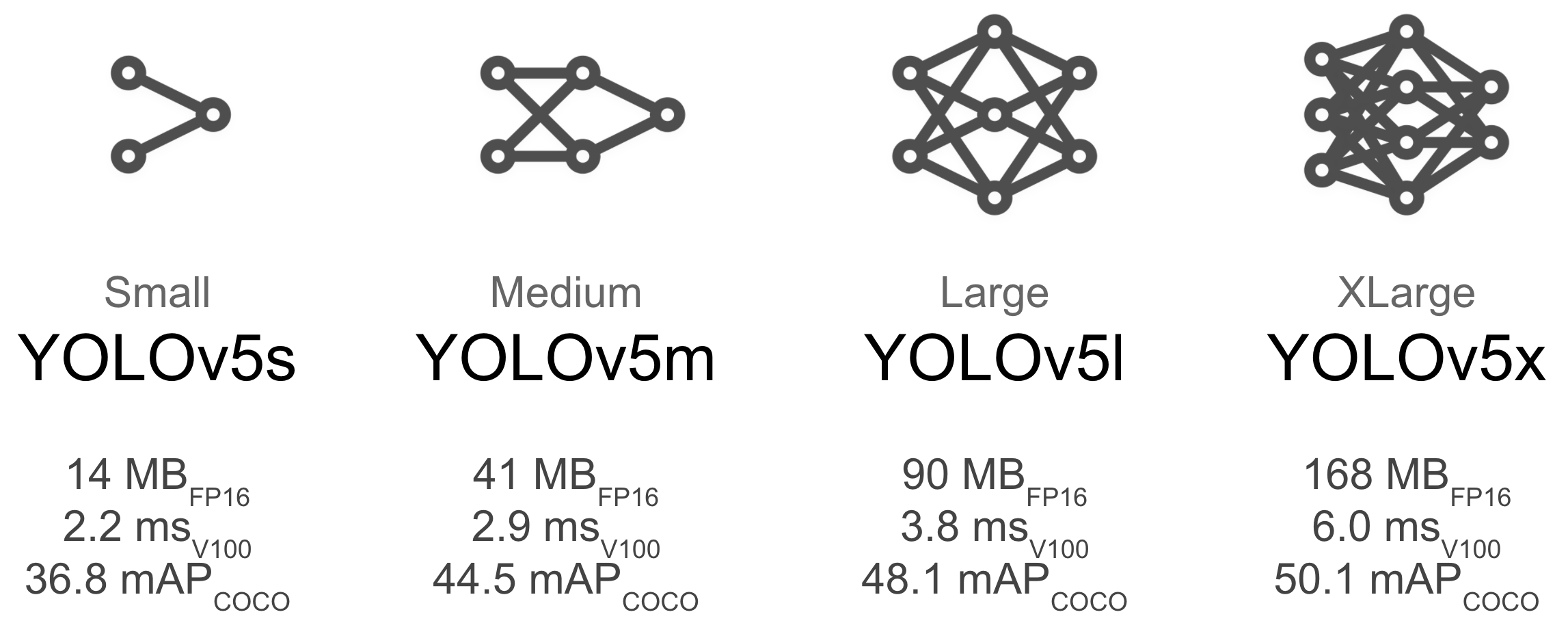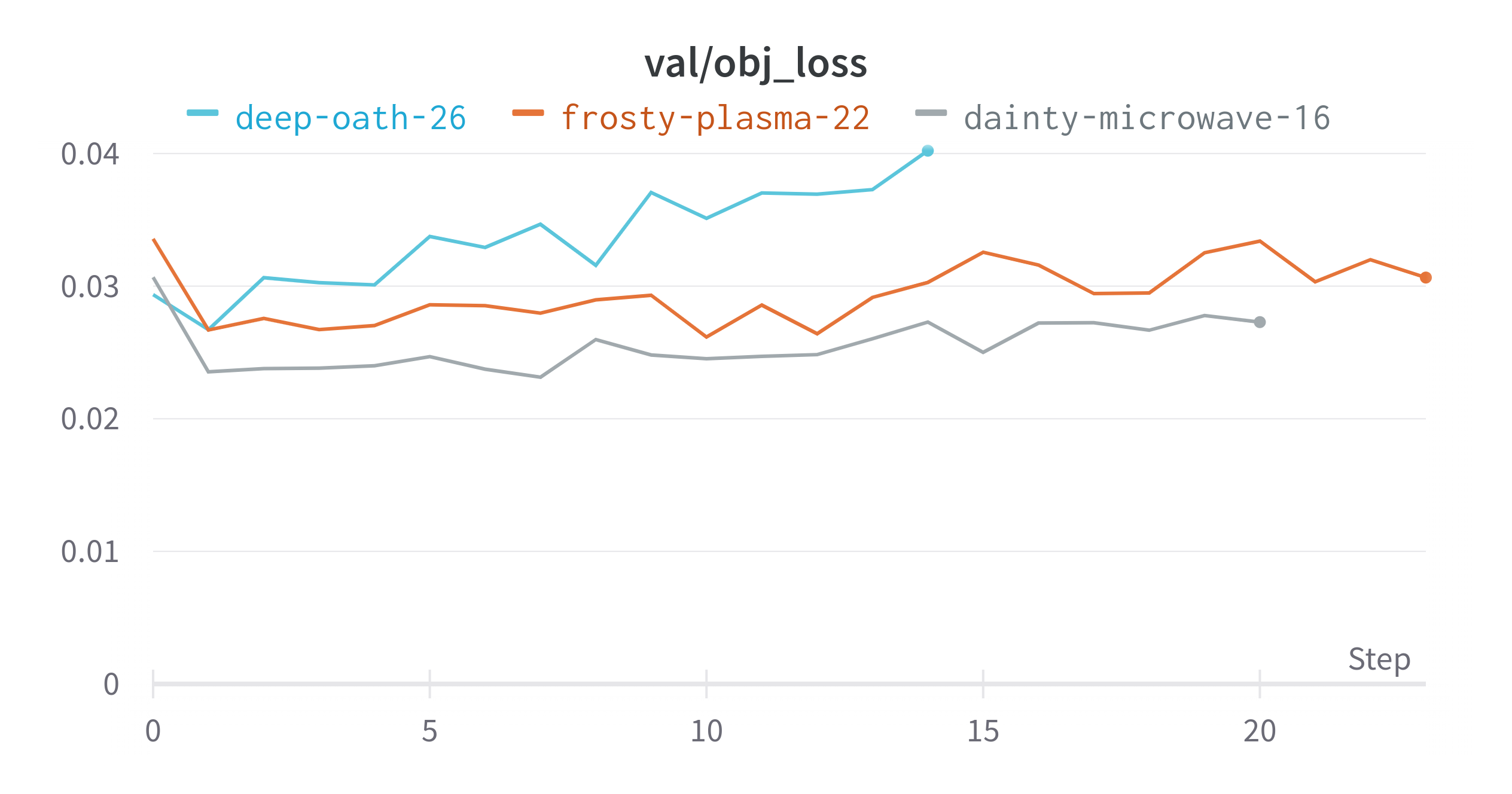@jaqub-manuel sure I can share some tips! Most of the time good results can be obtained with no changes to the models or training settings, provided your dataset is sufficiently large and well labelled. If at first you don't get good results, there are steps you might be able to take to improve, but we always recommend users first train with all default settings before considering any changes. This helps establish a performance baseline and spot areas for improvement.
If you have questions about your training results we recommend you provide the maximum amount of information possible if you expect a helpful response, including results plots (train losses, val losses, P, R, mAP), PR curve, confusion matrix, training mosaics, test results and dataset statistics images such as labels.png. All of these are located in your project/name directory, typically yolov5/runs/train/exp.
We've put together a full guide for users looking to get the best results on their YOLOv5 trainings below.
Dataset
- Images per class. ≥1.5k images per class
- Instances per class. ≥10k instances (labeled objects) per class total
- Image variety. Must be representative of deployed environment. For real-world use cases we recommend images from different times of day, different seasons, different weather, different lighting, different angles, different sources (scraped online, collected locally, different cameras) etc.
- Label consistency. All instances of all classes in all images must be labelled. Partial labelling will not work.
- Label accuracy. Labels must closely enclose each object. No space should exist between an object and it's bounding box. No objects should be missing a label.
- Background images. Background images are images with no objects that are added to a dataset to reduce False Positives (FP). We recommend about 0-10% background images to help reduce FPs (COCO has 1000 background images for reference, 1% of the total).
Model Selection
Larger models like YOLOv5x will produce better results in nearly all cases, but have more parameters and are slower to run. For mobile applications we recommend YOLOv5s/m, for cloud or desktop applications we recommend YOLOv5l/x. See our README table for a full comparison of all models.
To start training from pretrained weights simply pass the name of the model to the --weights argument. Models download automatically from the latest YOLOv5 release.
python train.py --data custom.yaml --weights yolov5s.pt
yolov5m.pt
yolov5l.pt
yolov5x.pt
Training Settings
Before modifying anything, first train with default settings to establish a performance baseline. A full list of train.py settings can be found in the train.py argparser.
- Epochs. Start with 300 epochs. If this overfits early then you can reduce epochs. If overfitting does not occur after 300 epochs, train longer, i.e. 600, 1200 etc epochs.
- Image size. COCO trains at native resolution of
--img 640, though due to the high amount of small objects in the dataset it can benefit from training at higher resolutions such as--img 1280. If there are many small objects then custom datasets will benefit from training at native or higher resolution. Best inference results are obtained at the same--imgas the training was run at, i.e. if you train at--img 1280you should also test and detect at--img 1280. - Batch size. Use the largest
--batch-sizethat your hardware allows for. Small batch sizes produce poor batchnorm statistics and should be avoided. - Hyperparameters. Default hyperparameters are in hyp.scratch.yaml. We recommend you train with default hyperparameters first before thinking of modifying any. In general, increasing augmentation hyperparameters will reduce and delay overfitting, allowing for longer trainings and higher final mAP. Reduction in loss component gain hyperparameters like
hyp['obj']will help reduce overfitting in those specific loss components. For an automated method of optimizing these hyperparameters, see our Hyperparameter Evolution Tutorial.
Further Reading
If you'd like to know more a good place to start is Karpathy's 'Recipe for Training Neural Networks', which has great ideas for training that apply broadly across all ML domains: http://karpathy.github.io/2019/04/25/recipe/


















Dear, @glenn-jocher Although I have done many trials, the recall value is low compared to the precision value. Although I set the recall value of the fitness function to 0.8 and the precision value to 0.2, I did not get a good result. Can you share some tips if you have some suggestions? thanks.
https://github.com/ultralytics/yolov5/blob/886f1c03d839575afecb059accf74296fad395b6/utils/metrics.py#L12